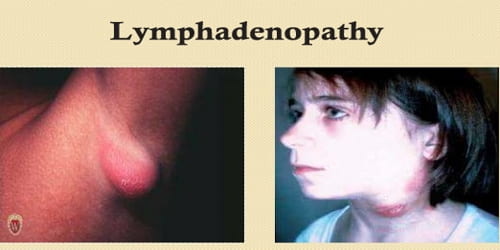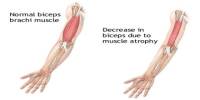The acidity of aerosols in indoor air can fluctuate, according to a recent study from many Swiss universities, including EPFL. This acidity controls how long viruses like influenza and SARS-CoV-2 remain contagious in the air, having significant effects on virus transmission and containment methods.
SARS-CoV-2, the influenza virus, and other viruses hitchhike from one person to another on aerosols. When an infected person coughs, sneezes, or simply exhales, these tiny liquid-filled particles are released into the air and can be swallowed by others.
The risk of infection can be decreased by lowering the concentration of aerosol particles in homes, workplaces, and public transportation vehicles, which is why it is generally considered vital to ventilate spaces adequately and filter indoor air.
How do suspended particles become acidic?
It’s not clear how long viruses in aerosols remain infectious. According to certain research, air temperature and humidity may affect how long a virus survives. The chemical makeup of inhaled aerosols, particularly their acidity and interactions with indoor air, is a component that has thus far gone unnoticed.
Exhaled aerosol particles can absorb volatile acids and other airborne substances, such as acetic acid, nitric acid, or ammonia, from the interior air, which in turn modifies the acidity (pH) levels of the particles. Many viruses, such as the influenza A virus, are acid-sensitive.
The impact of aerosols becoming acidic after exhale on the viral load they carry has not yet been studied.
Now a team of researchers from ETH Zurich, EPFL and the University of Zurich has investigated exactly that. They demonstrate in a new study for the first time how, under various environmental conditions, the pH of aerosol particles varies in the seconds and hours after exhalation. Further, they show how this impacts the viruses contained in the particles. The study has just been published in the journal Environmental Science & Technology.
Exhaled small aerosol particles become acidic very quickly
The researchers found that the inhaled aerosols acidify far more quickly than one might anticipate. The quantity of acid molecules present in the surrounding air and the size of the aerosol particles determine how quickly they do this. The scientists looked at tiny, specially created droplets of lung fluid and nasal mucus that were only a few micrometers across.
In typical indoor air, it took these droplets only about 100 seconds to reach a pH of 4, which is roughly equivalent to the acidity of orange juice. The pH value is a measure of acidity: a neutral solution has a pH of 7; the pH of acidic solutions is less than 7; that of basic solutions is greater than 7.
According to the study, nitric acid from the outside air is a major cause of the acidification of aerosols. It penetrates indoor places when windows are left open or when ventilation systems bring in outside air.
Nitrogen oxides (NOx), which are mostly emitted into the atmosphere as byproducts of combustion processes along with the exhaust gases of diesel engines and home furnaces, undergo chemical transformation to produce nitric acid. As a result, urban regions and cities always have a supply of nitrogen oxides and nitric acid.
Although it readily sticks to surfaces, furnishings, clothing, and skin, nitric acid also absorbs into the minute aerosol particles that are inhaled. This increases their acidity and lowers their pH.
Aerosol pH is key to virus inactivation
The study team also demonstrates that the rate at which viruses caught in inhaled mucus particles are inactivated can be significantly influenced by the environment’s acidity. The two kinds of virus were found to have different acid sensitivities: SARS-CoV-2 is so acid-resistant that at first the experts didn’t believe their measurements. It took a pH of below 2, i.e., very acidic conditions such as those in undiluted lemon juice, to inactivate the coronavirus. Such conditions cannot be reached in typical indoor air.
Influenza A viruses, on the other hand, are inactivated after just one minute in acidic conditions of pH 4. In normal interior situations, freshly inhaled mucus particles reach this threshold in less than two minutes.
It immediately becomes evident that 99% of influenza A viruses will be inactivated in the aerosol after around three minutes when the time required to acidify the aerosol is added to the time required to inactivate the flu viruses at a pH 4 or lower. This short time span surprised the researchers. SARS-CoV-2 is a different story: since aerosol pH hardly ever falls below 3.5 in typical indoor spaces, it takes days for 99% of coronaviruses to be inactivated.
The study demonstrates that SARS-CoV-2 risk can be decreased as well as effective inactivation of influenza A viruses in aerosols in well-ventilated rooms. However, the likelihood that aerosols will contain live viruses in poorly ventilated spaces is 100 times higher than it is in spaces with a good supply of fresh air.
This leads the researchers to suggest that indoor spaces should have regular and enough ventilation so that basic gases like ammonia from human and indoor activity emissions may be taken outside while acidic elements of the outside air can enter the spaces in suitable amounts.
Filtration removes acids from the air
Even normal air conditioning systems with air filters can lead to a reduction in volatile acids. “Acid removal is likely even more pronounced in museums, libraries or hospitals with activated carbon filters. In such public buildings, the relative risk of influenza transmission can increase significantly compared to buildings supplied with unfiltered outside air,” the team writes in the article.
In reaction, the research team might envision removing basic elements like ammonia and adding modest amounts of volatile acids like nitric acid to filtered air in an effort to hasten the acidity of the aerosols.
According to the study, a concentration of nitric acid at levels around 50 ppb (parts per billion of air, which is 1/40th of the 8-hour legal limit in the workplace) could reduce the risk of COVID-19 infection a thousandfold.
A long road to a healthier indoor climate
As it is unclear what effects such acid levels may have, the researchers are also conscious that such a metric will be highly contentious. Air is properly filtered at museums and libraries to protect the books and artwork from deterioration. Due to the possibility of conduits or materials being damaged by the addition of acids, civil engineers would also not be happy.
Therefore, the study’s researchers concur that long-term studies are required to evaluate the dangers to both persons and structures. As a result, it may be difficult to establish the usage of volatile acids as a virus control strategy. However, it shouldn’t be debatable to remove ammonia, a molecule that is easily emitted by humans and that stabilizes viruses while raising pH.
The present study is the result of an interdisciplinary collaboration between researchers at ETH Zurich, EPFL and the University of Zurich. Following years of preparation, this work got underway in 2019 as an influenza-only project. In light of the COVID-19 pandemic, the researchers expanded the scope to include the new coronavirus.
How these two viruses react to acidic environments was investigated by researchers in the group led by Silke Stertz at the University of Zurich’s Institute of Medical Virology together with colleagues from the Environmental Chemistry Laboratory at EPFL led by Tamar Kohn, who is also the overall leader of this SNSF Sinergia project. In nasal or lung mucus that the researchers had previously gathered from specially produced mucus cell cultures, they assessed the sensitivity of influenza A and coronaviruses to various acidic environments.
Researchers from the Atmospheric Chemistry Group at ETH Zurich, led by Thomas Peter and Ulrich Krieger, investigated the behavior of mucus aerosols using an electrodynamic particle trap. Researchers can investigate individual suspended particles with this setup without coming into contact with any surfaces for days or weeks at a time, for example to observe how humidity changes impact them.
The Peter group was in charge of model simulations as well. This modeling-based methodology may turn out to be the study’s weak point; additional tests will be necessary to determine how airborne viruses actually behave in acidic aerosols.
With these factors in mind, scientists working under the direction of Athanasios Nenes at EPFL, who first suggested that acidity might be a significant modulator of virus activity, have created experimental methods and modeling strategies that will enable future studies to be conducted both under strict biosafety conditions and using various indoor air compositions.
















